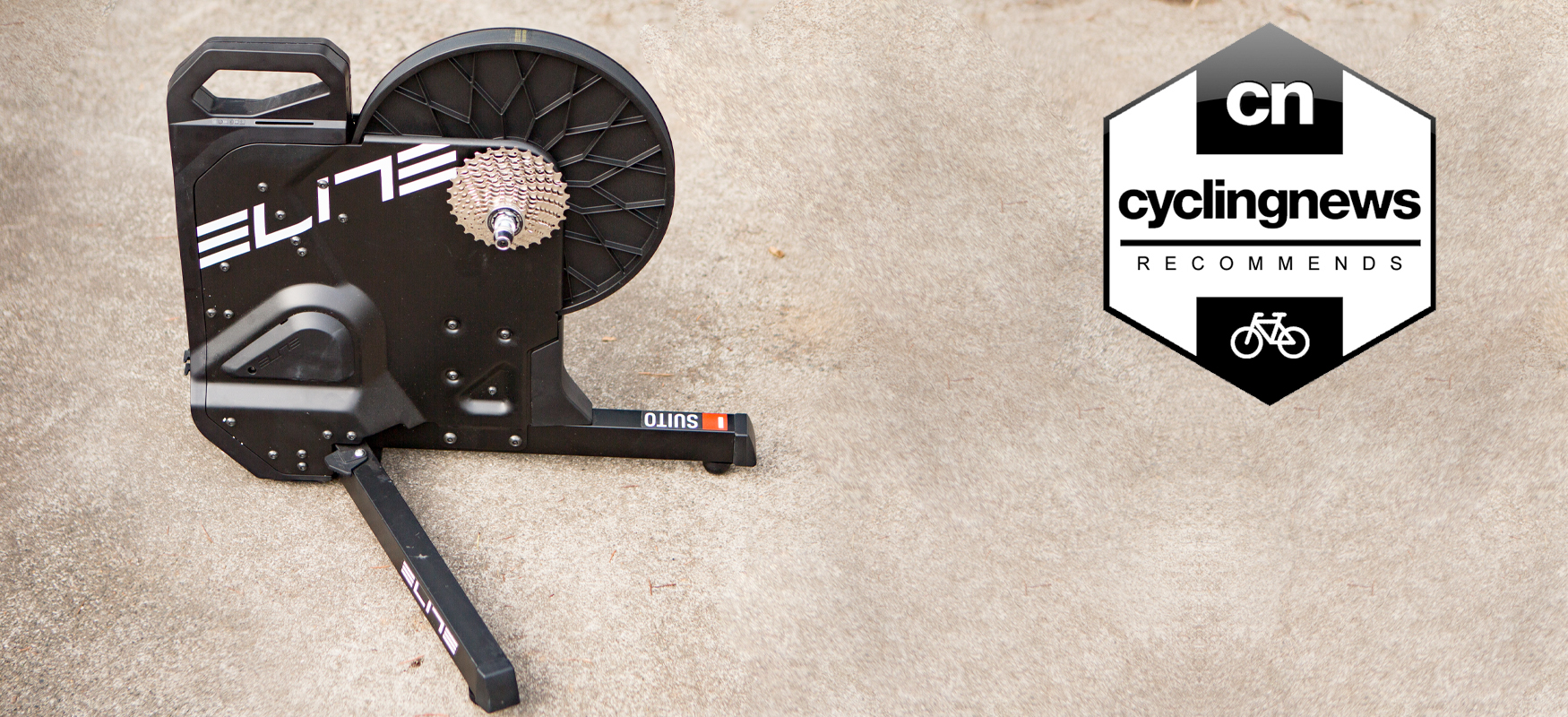Cyclingnews Verdict
The Elite Suito smart trainer leans away from fast ERG performance and favours a natural road feel. It also has one of the best external form factors of any smart trainer on the market
Pros
- +
Excellent handle
- +
Super narrow when folded
- +
Very realistic ride feel
- +
Works with the Rizer Accessory
Cons
- -
Single Bluetooth radio
- -
Two different companion apps
- -
Some basic functions require paid service
- -
Too close in price to the Direto XR
You can trust Cyclingnews
Modern cycling has been fundamentally changed by the introduction of computer-controlled smart turbo trainers. You can now ride indoors all year around if you want to, with the best smart trainers getting more expansive all the time, while there are multiple indoor cycling apps to keep you busy.
The Elite Suito is one such smart turbo trainer, and we've been putting it to the test for a while now. You may have already seen it listed in our guide to the best turbo trainers, and now you can read on to find out why we like it.
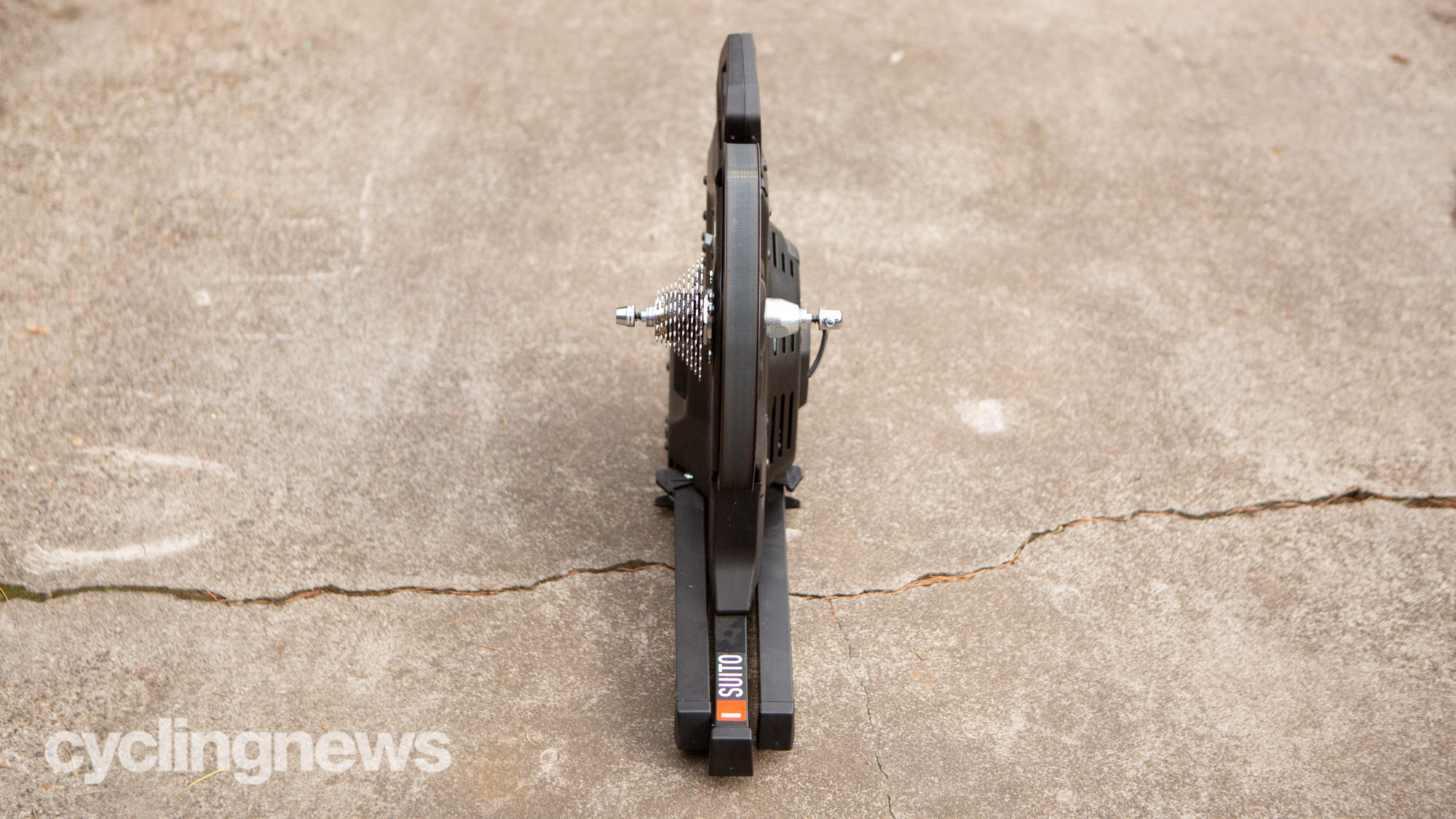
Design and aesthetics
The Elite Suito is a tall, thin unit with a belt-driven 3.5kg flywheel at the top. Encapsulating the flywheel on either side is a metal panel with a function-over-form look to it. It's not bad looking but it lacks any attempt to hide the many screws and bolts holding it together. This may not matter to some, but if you're likely to have your trainer out on display at all times, you might want it to look a certain way.
Just below the peak of the flywheel is a moulded plastic handle. This is one of those things that might not seem like a big deal until you don't have it. The Suito handle is the perfect size to grab, and sits on the unit in a way that keeps it well balanced. Next to the handle, right at the top of the unit, is an array of LED indicators that let you know what connections are active.
At the bottom of the Suito is where you find the folding stabiliser arms. There's a locking mechanism that keeps them in place, and if your floor isn't level, each side leg allows adjustment for the feet so you can brace the Suito differently on either side. With both legs folded, the entire unit is narrower than the competition, which makes storage a fairly easy exercise.
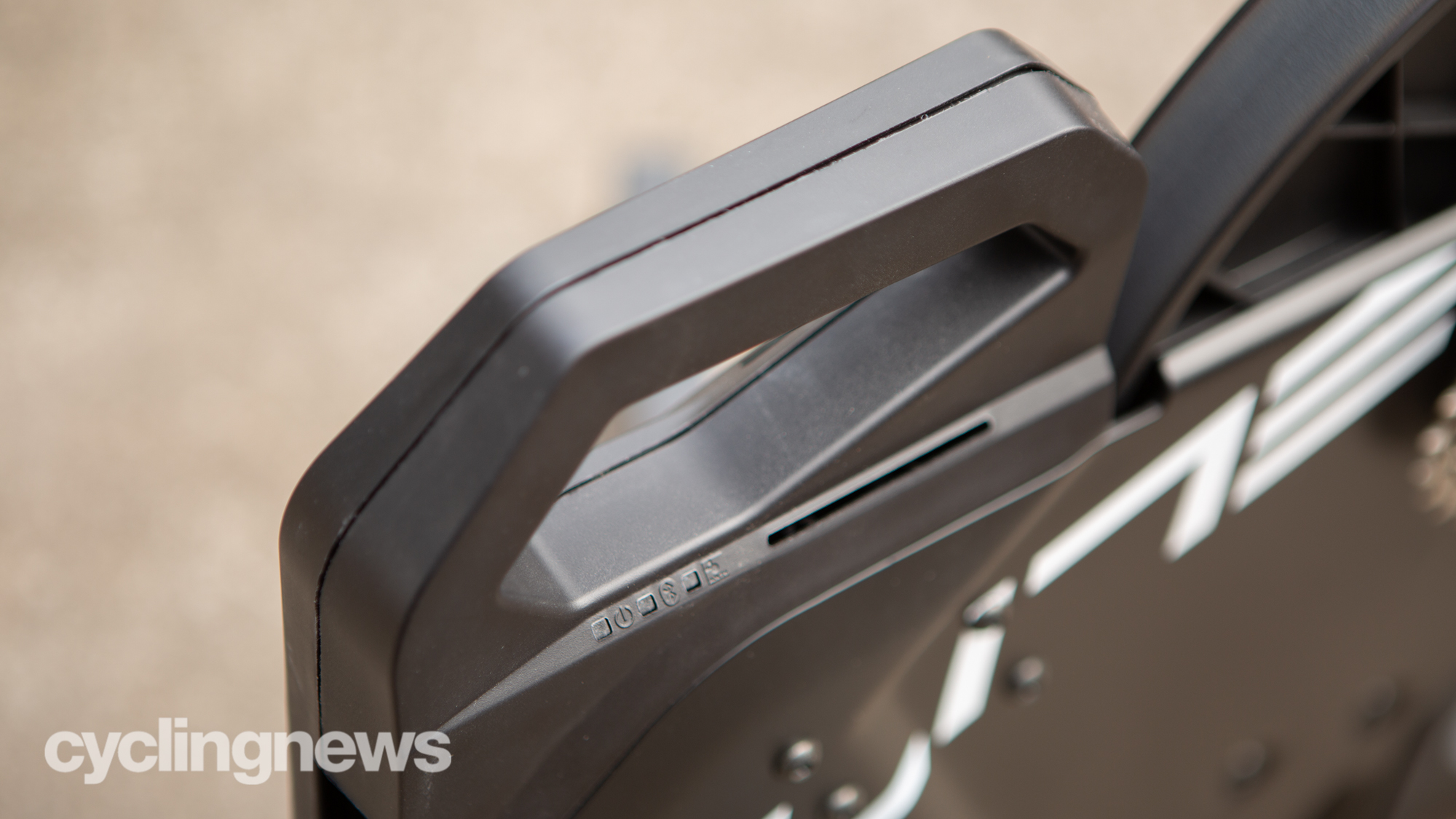
Compatibility
Just about every current turbo trainer does well in this regard and the Elite Suito is no different. Out of the box you’ve got compatibility with any bike using a 130-135 x 5mm quick release or a 142 x 12mm thru-axle. If you need 135 x 10-12mm, 148 x 12mm or 157 x 12mm then there are adapters available.
Since the Suito is a direct-drive turbo trainer, you also need to be able to mount a compatible cassette. It comes with a pre-installed 11-speed Shimano 105 (or equivalent) cassette, which has become par for the course. That said, with the global parts shortages you're more likely to find the Suito-T, which is exactly the same as the Suito pictured here but costs a little less and comes without the cassette.
One of the benefits of the tall, narrow design is a wide-open drive side. There’s plenty of room for long-cage derailleurs and larger cassettes. Elite lists compatibility for 9/10/11-speed Shimano out of the box and with the appropriate adapter you can mount 9/10/11/12-speed Campagnolo, 12-speed SRAM NX (XD-XDR freehub), and 12-speed Shimano micro spline cassettes.
On the electronics side there’s support for ANT+ FE-C and Bluetooth, and it’s easy to connect to any of the major software solutions through iOS, Android, OSX and Windows. In most cases, the best solution is going to be ANT+ however, if you need to use Bluetooth there is only a single radio. This will limit your connections to one device. On the plus side of the Bluetooth scenario, the cadence data goes out bundled with the power data. Stated simple, if you are running Zwift on an Apple TV, you will have enough Bluetooth connections for your heart rate monitor, power, and cadence.
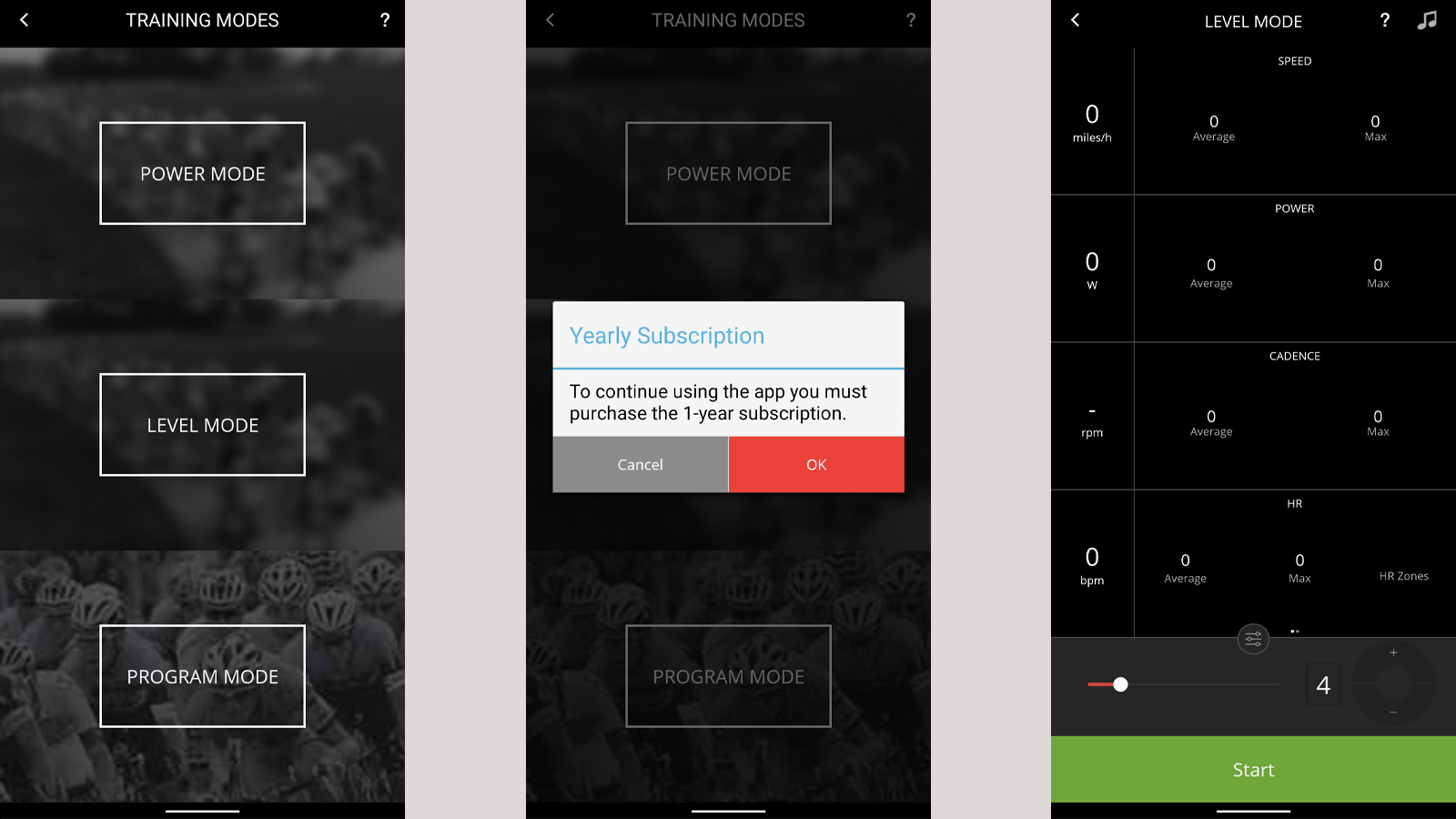
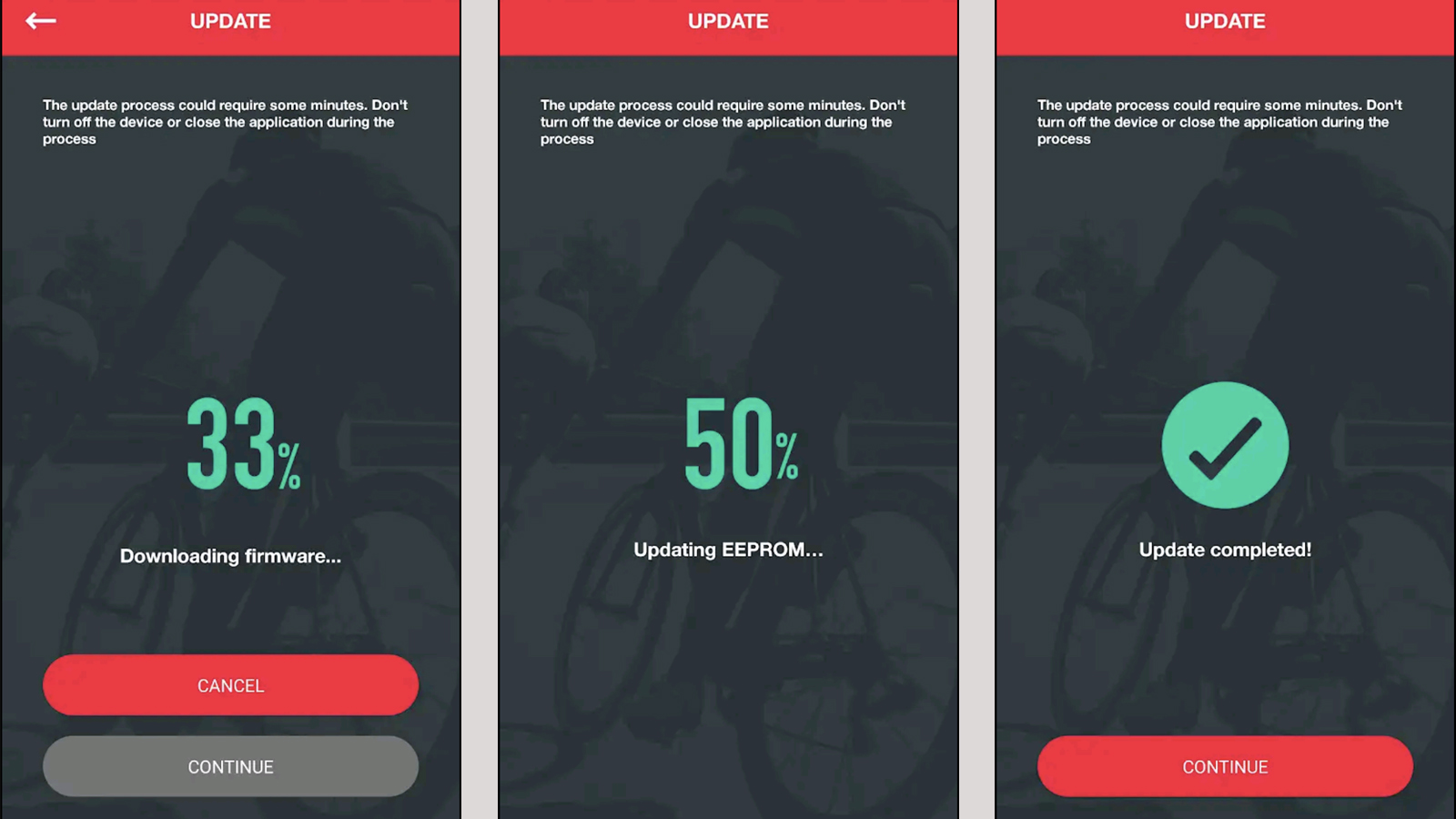
Companion App
Elite has two apps you’ll need for interacting with the Suito. The 'Upgrado' app handles firmware updates. It’s simple and it worked with no issues for multiple updates.
The other app is the 'myEtraining' app. This one handles a variety of training tools, however, almost all of them require a subscription. There are two sections that will be useful though. The first is the settings and it’s here that you can do a spindown calibration. You might also be interested in the 'Training Modes' section although, again, much of this is paid only. If you click through from the main menu you’ll land on a secondary menu with three options. Only the 'Level Mode' is available for free. If you were wanting to ride in ERG mode at a set difficulty then you’d typically use 'Power Mode' however that’s a paid feature. Instead, you can use Level Mode and set a level that roughly translates to the power you are looking for.
Performance
When it comes to ERG mode, turbo trainers have the ability to almost instantly adjust power and hold you to the requested power absolutely. The job of taking that capability and translating it to a natural feeling ride falls on the shoulders of the software. Every company handles it a little differently and Elite leans towards a more natural feeling ride at the expense of quick ERG adjustments. Depending on the type of rider you are, that could be a good thing, but I spent a lot of time figuring out to what extent that tuning favoured the ride feel.
The way I tease out the details is to run the Tyndall workout through TrainerRoad. It consists of 15 second intervals at 150 per cent of FTP with 15 second rest periods. The Elite ride tuning, and the Elite Suito, takes a light hand in adjusting the rider's power output. The Suito allows the rider to surge over the requested power before reining it in and dropping below. Each time you pass the target power it will be closer until it eventually comes within a few watts. This is the same behaviour as all smart trainers, but Elite leaves more responsibility with the rider.
In a 15-second interval the Elite software tuning never really dials in the correct power, which is actually not as big of an issue as it sounds. The short interval exaggerates the issue and given time the Suito will stabilise. Aside from that, the intervals still feel correct. Start diving into the graphs and it's not perfect, but you're still getting the workout you signed up for. That said, it is a little slower to adjust than its rivals.
There is an advantage to that slightly slower ERG mode. When racing and free riding the road feel is more natural. Just like the slow ERG performance is pretty subtle, so is the road feel difference. Wahoo's ride tuning makes for a little more of a numb feeling in comparison to the Elite tuning.
Despite that give and take in the feel of the trainer, there's no good way to talk about the app experience. The Elite apps need some work. It's arbitrary that riding at a set power is a paid feature but riding at a set level is free. Elite is welcome to offer a paid experience but basic trainer functionality should be included in the price of the unit. There's also no good reason to have two apps with split functionality.
Noise is another concern when shopping for a smart trainer and, in that regard, the Elite Suito is well controlled and not as loud as some of the other options in this segment.
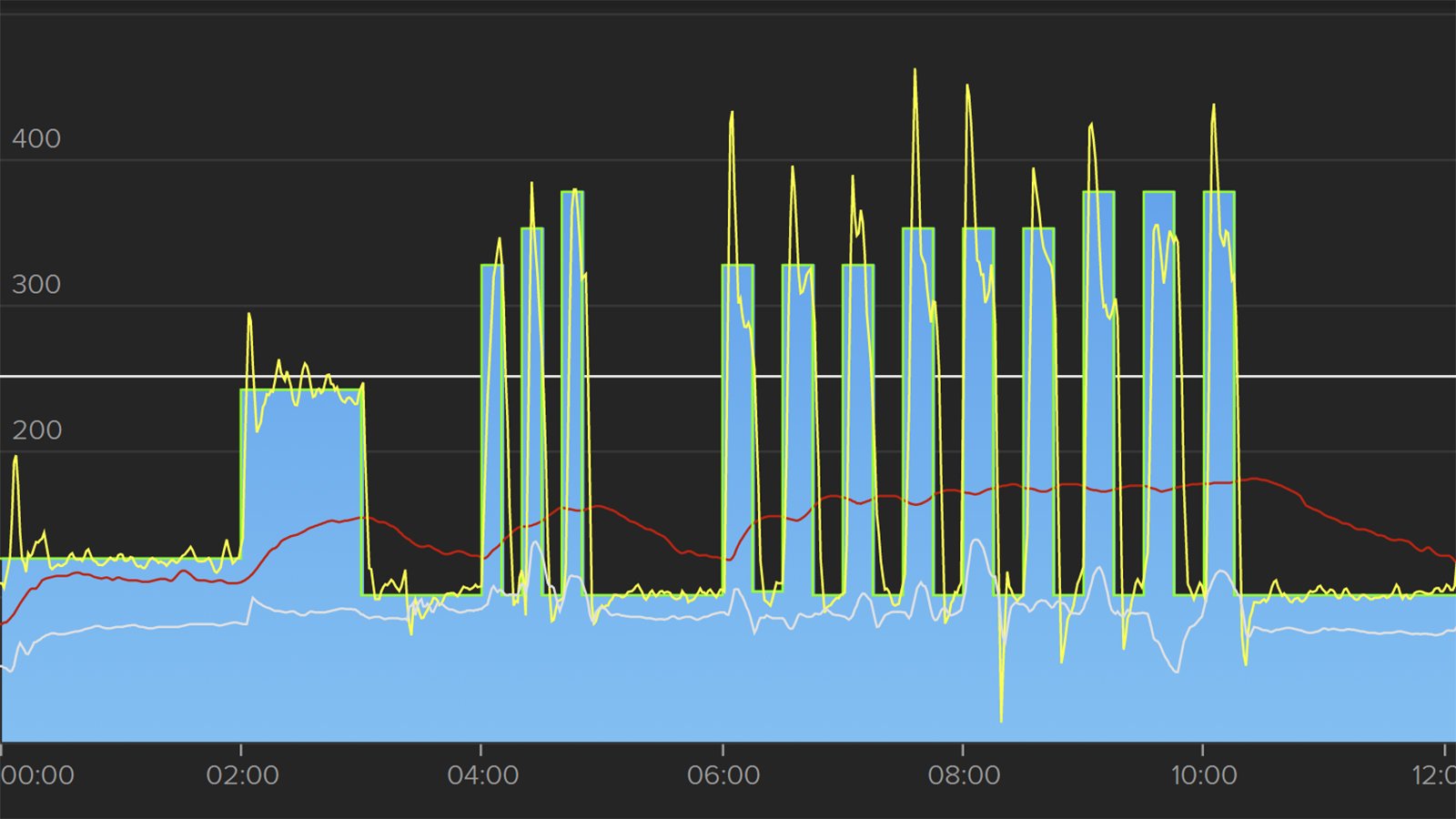
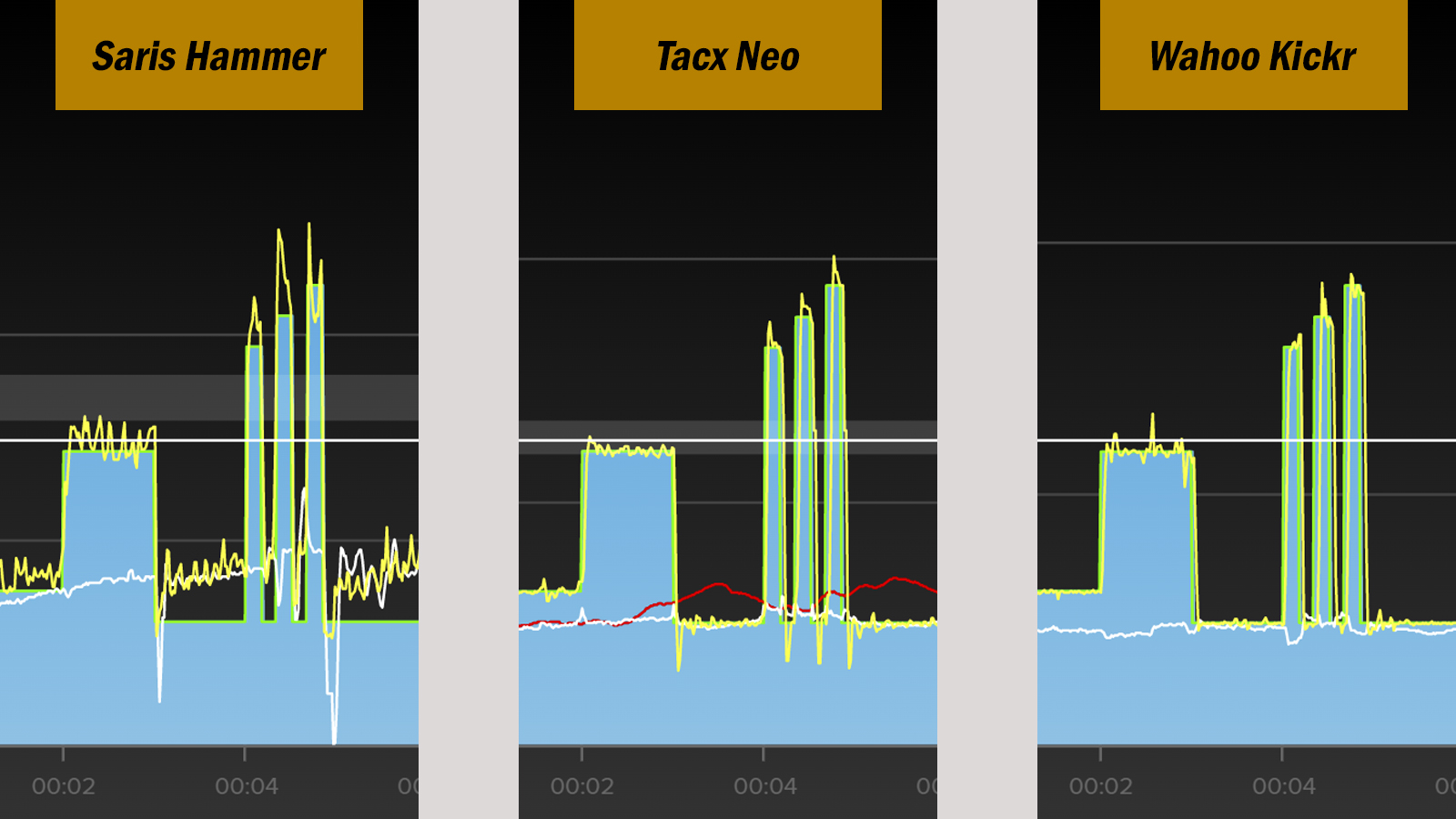
Verdict
If the thing you prioritise in an indoor trainer is a natural ride feel then the Elite Suito is an excellent option. On top of that, the Suito has a great case design and top-quality handle. If there's any chance you'll need to move your turbo trainer around, it's the best on the market.
The main challenge with the Suito is that it’s so close in price to the Direto XR, and it carries some small downgrades in comparison. The claimed accuracy is +/-2.5% instead of the +/-1.5% of the Direto XR, while the max slope simulation is 15% down from 24%, and the flywheel drops from 5.1kg to 3.5kg. None of these are big issues but the pricing is just too close. What it really highlights is that the bigger brother to the Suito carries an excellent price for a top-of-the-line option. The Suito is a good unit, but you might be better spending only a little more to get higher specs.
Tech Specs: Elite Suito smart turbo trainer
- Price: £649.99 / $799.00
- Dimensions Open: 560 x 760 x 495 mm / 22,04 x 29,92”x19,48”
- Dimensions Closed: 560 x 150 x 495 mm / 22,04”x 5,90”x19,48”
- Weight: 14,5 Kg / 31,96 lb
- Power Meter Accuracy: ± 2.5%
- Wireless Communication: ANT+ (FE-C, Power, Speed & Cadence) and Bluetooth (FTMS, Power and Speed & Cadence)
- Max Simulated Slop: 15%
- Max Power: 730 Watt (20km/h) - 1900 Watt (40km/h)
- Flywheel Weight: 3.5kg
- Bike Compatibility: Race bike, Mountain bike and city bike, also carbon ones, with 130x135 x 5mm hubs and with quick clamping system and 142x12 mm with thru-axle (an adapter is available for Boost 148x12 mm rear hubs)
- Cassette Compatibility: 9/10/11 speed Shimano/SRAM, 9/10/11/12 speed Campagnolo, 12 speed SRAM NX, 12 speed micro Spline Shimano
- Software Included: 12-month free subscription to My E-Training software and app 1-month free subscription to Zwift app
Josh hails from the Pacific Northwest of the United States but would prefer riding through the desert than the rain. He will happily talk for hours about the minutiae of cycling tech but also has an understanding that most people just want things to work. He is a road cyclist at heart and doesn't care much if those roads are paved, dirt, or digital. Although he rarely races, if you ask him to ride from sunrise to sunset the answer will be yes. Height: 5'9" Weight: 140 lb. Rides: Salsa Warbird, Cannondale CAAD9, Enve Melee, Look 795 Blade RS, Priority Continuum Onyx
